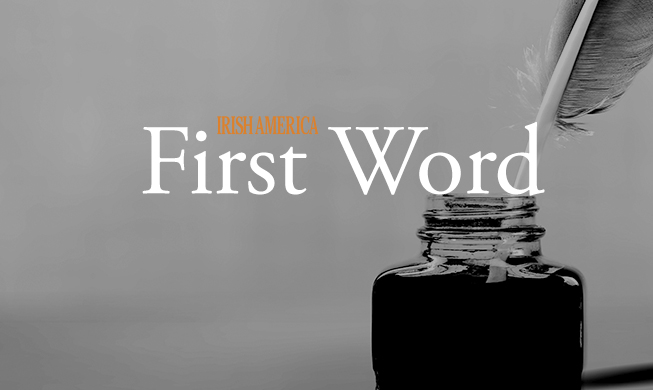
Looking back over the year there are few images that stand out more in my mind than that of Mark McGwire and Sammy Sosa hugging after McGwire’s record-tying home run. In a year beset with
political scandals it was such a relief to watch McGwire and Sosa. You couldn’t ask for two guys with more class – one an Irish American, the other an immigrant from the Dominican Republic.
Somehow, they offered reassurance that the essential tenets of American life, human decency and fair play, were still intact. The openness and big-heartedness of McGwire (“Wouldn’t it be great if we ended up tied?”) symbolized the America that I experienced as a young immigrant. And Sosa, who once helped support his family by shining shoes, represented the ideal that in America, with hard work, anything is possible.
If baseball and the immigrant struggle seem indelibly linked (today one in five major league players is foreign-born), in the 1880s it was the Irish who dominated the game. So much so, according to one writer of the era, that their rivals complained they were “physically superior.” More than a century later, Mark McGwire would fit in that category but his superiority is not just physical. Through the years he has shown himself to be a first-class human being. His quiet donation of $3 million to help abused children puts him in a league of his own.
He is the kind of guy with whom, I reckon, the Business 100 wouldn’t mind sharing the cover. They too, through grit and determination, have cut a swath through the business field of dreams that would have been unimaginable 50 years ago.
The women and men profiled in these pages stand as a benchmark of how far the Irish have come from the days when sport was one of the few avenues to success open to them. I like to think some of that business batting power comes from ancestors who found opportunity wherever they could, not giving up when times were tough.
Anne Sweeney, president of Disney/ ABC Cable Networks (and keynote speaker at this year’s Business 100 lunch) tells us of the “amazing courage” of her great-grandfather, who, at age 13, came over on the boat with a younger brother and sister. Through hard work and a “sense of family” they and others like them not only survived but set a course for future generations to follow.
As we celebrate our success we remember those immigrants and the fact that less than 50 years ago Tip O’Neill led a boycott on a bank in Boston that had not one Irish Catholic employee but whose deposits were 90 percent from that community.
In an interview with Irish America in 1986, the legendary Speaker of the House remembered those times. “I’ve never forgotten my roots. I remember the poverty and the tough lives that people had. If somebody said that I played a part in changing that, in changing America for the better, that would satisfy me.”
Mark McGwire will be remembered for changing things for the better, as will those members of our Business 100 who give something back to the community. Many of them have shown that they haven’t forgotten their roots by serving on the board of organizations set up to help the Irish economy. For instance, 13 of our Business 100 are members of the Ireland Chamber of Commerce in the U.S.A.
And so the Irish story is one of two parts: The love that Irish immigrants have for America, the country that allowed them to prosper, and the appreciation that Irish Americans have for Ireland.
Mike Burke, a sportsman, although he was described as more a businessman than a player, spoke of this appreciation. Burke, president of the New York Yankees from 1966 to 1973, retired in Ireland. His obituary, published in The New York Times on February 7, 1987, provided the following quote: “I had an immensely happy time doing the Yankees and Madison Square Garden… It’s just at this stage in my life, there is this strong pull that Ireland has on me – emotional and romantic, I suppose – but also because my family has been here for 800 years and there has always been a strong rush of Irish blood in my veins.”
Editor’s Note: This article was originally published in the November/December 1998 issue of Irish America. ⬥


Leave a Reply